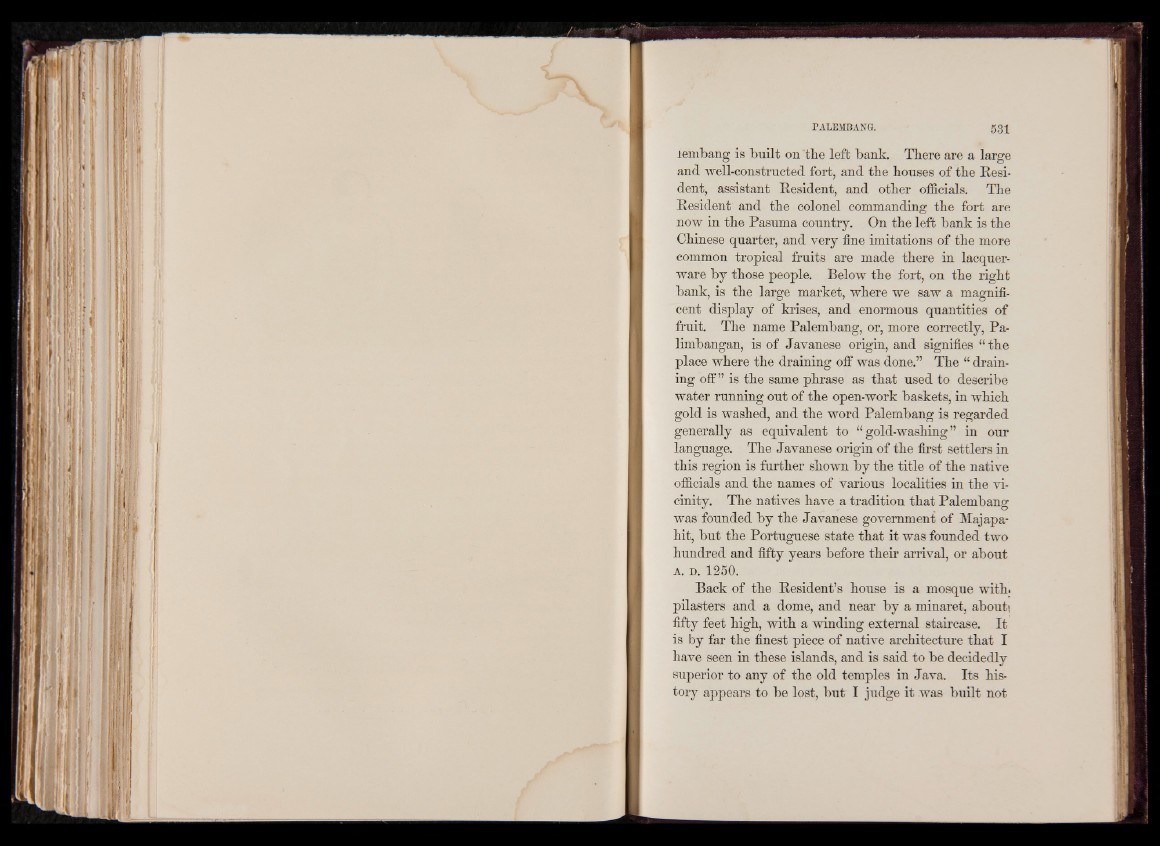
lembang is built on the left bank. There are a large
and well-constructed fort, and tbe bouses of tbe Resident,
assistant Resident, and otber officials. Tbe
Resident and tbe colonel commanding tbe fort are
now in tbe Pasuma country. On tbe left bank is tbe
Chinese quarter, and very fine imitations of tbe more
common tropical fruits are made tbere in lacquer-
ware by tbose people. Below tbe fort, on tbe rigbt
bank, is tbe large market, wbere we saw a magnificent
display of krises, and enormous quantities of
fruit. Tbe name Palembang, or, more correctly, Pa-
limbangan, is of Javanese origin, and signifies “ tbe
place wbere tbe draining off was done.” Tbe “ draining
off” is tbe same pbrase as tbat used to describe
water running out of tbe open-work baskets, in wbicb
gold is washed, and tbe word Palembang is regarded
generally as equivalent to “ gold-washing ” in our
language. Tbe Javanese origin of tbe first settlers in
this region is further shown by tbe title of tbe native
officials and tbe names of various localities in tbe vicinity.
Tbe natives have a tradition tbat Palembang
was founded by tbe Javanese government of Majapa-
bit, but tbe Portuguese state tbat it was founded two
hundred and fifty years before their arrival, or about
a . d . 1250.
Back of tbe Resident’s bouse is a mosque with,
pilasters and a dome, and near by a minaret, about)
fifty feet high, with a winding external staircase. It
is by far tbe finest piece of native architecture tbat I
have seen in these islands, and is said to be decidedly
superior to any of tbe old temples in Java. Its history
appears to be lost, but I judge it was built not